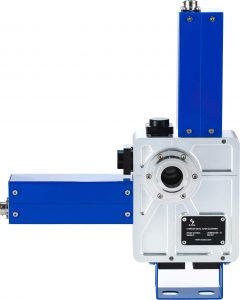Accelerator Physics and Dosimetry
Near term experimental projects
Doped Quartz Fibre and UniBEaM Characterization – Proposed Masters Project

- Literature Review
- Measure fibre response to x-rays/gammas produced by a medical Linac at various energies and dose rates
- Measure fibre response to electrons from a medical Linac at various energies and dose rates
- Use UniBEaM technology to characterize electron and x-ray/gamma intensity distribution in plan view x and y at various energies, at various dose rates, and for full range of collimator settings and determine corresponding beam size at foil. Relate to improved Monte-Carlo simulations and potentially improved dose planning for patients
- Develop and test proto-type circuitry for distinguishing pulse to pulse beam characteristics (in real time)
Doped Quartz Fibre 200 micron diameter – Thermal Performance Characterization by Computation – Proposed 4th Year Project
Calculate as a function of particle type: Electron, Proton, Carbon ion, Boron Ion. The energy deposited in the fibre as a function of kinetic energy of the particles (this depends also on whether the particles are fully stopped or not, and on the heat dissipation characteristics of the fibre).
In the end, the student would produce plots of the maximum current density (say micro-amperes per mm^2) that the fibre can withstand at thermal breakdown point as a function of kinetic energy of each particle type (the student would have to use SRIM to look at dE/dx for each particle as a function of particle kinetic energy, work out heat dissipation characteristics of fibre, work out thermal breakdown point, work out deposited power density the fibre can handle at thermal breakdown point).
Long term concept project
 Medical Linac + Spectrometer with substantive accelerator beam (i.e. electron beam diagnostics within the accelerator up to any point from electron source to foil) and emitted dose diagnostics (i.e. particles after foil) in a non-clinical lab environment.
Medical Linac + Spectrometer with substantive accelerator beam (i.e. electron beam diagnostics within the accelerator up to any point from electron source to foil) and emitted dose diagnostics (i.e. particles after foil) in a non-clinical lab environment.
Experiments would involve carefully measuring Linac e-beam size, energy dispersion, and beam intensity distributions and foil choice and foil scattering characteristics over the full range of the accelerator operational settings and their impacts on emitted gamma’s and electron distributions and improving dose models distribution models.
E-Linac laboratory would also modify lab e-linac with new focusing elements to provide extensive new flexibility in beam spot size delivery and control and intensity distribution and control. Characterization of dose delivery and patient planning with this enhanced capability would be fully explored.
Laboratory would also provide a platform for discovery science advancements in dose and accelerator beam diagnostics materials, and techniques, and the possibility for launching new devices and technologies which can be spun-out in new companies, or licensed with royalties accruing to the university.